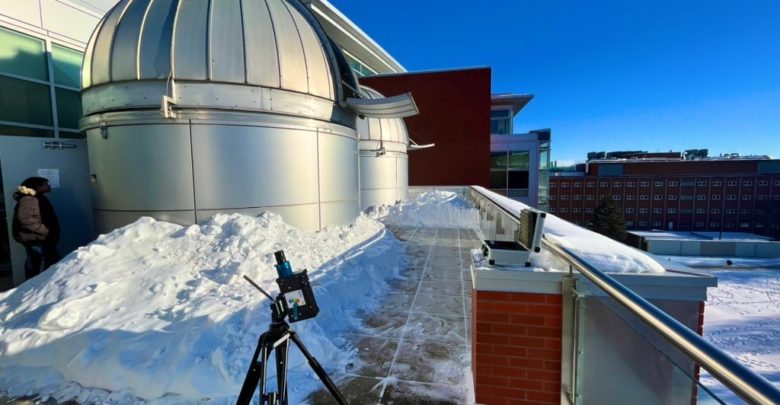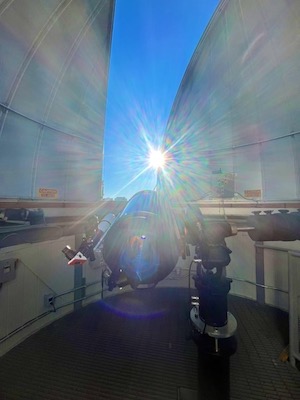 Megan Posyluzny
Megan PosyluznyThe Marble Pedestal is a recurring Gateway opinion column for students to express praise, love, adoration, or just hype something up.
An interest in learning about the wonders of space seems to be a unifying similarity between students from all faculties. While gazing at the beauty of distant stars, we can’t help but wonder what kind of complex science explains their majestic existence in our lives.
At U of A, the Department of Physics Astronomical Observatory on the fifth floor of the Centennial Centre for Interdisciplinary Sciences (CCIS) is encouraging the general public to learn more. While viewing incredible sights of celestial objects, student volunteers and staff also share their expertise in an accessible, fun, and engaging way.
Every Thursday, from 12 p.m. to 1 p.m., anyone can freely attend solar viewings on a clear day. If your schedule is busy around noon, the observatory offers planetary viewings of Mars and Jupiter later in the evening from 7 p.m. to 8 p.m. in the winter term. They also advertise viewings of star clusters and nebulae on their Twitter account.
Recent weeks have been cloudy, but luckily I was able to attend the observatory’s noon solar viewing on January 19. After recent smog, the sky was finally clear, which facilitated stellar views of the sun.
While the observatory closes in -20 degrees or cooler, which made the mild conditions perfect for viewing.
Interestingly, each of the observatory’s telescopes focused on different layers of the sun. Volunteers were also excited to focus on a large dark sunspot that had formed, which was neat to see.
The volunteers excitedly offered us pieces of welder’s glass secured in cardboard, to look at the sunspot with the naked eye. Everyone was amazed that we could still see the sunspot without any magnification from a telescope. When the telescopes were busy, this was a cool alternative to admire the sun’s view.
A student volunteer told me that one telescope looked at the chromosphere. This is the middle layer of the sun’s atmosphere. While squinting through this telescope, the sun looked like a vibrant red circle with wavy impressions. The constantly swirling plasma looked like fiery fractals, with a big black smudge in the centre.
The other telescope was fixed on the photosphere — the innermost layer we can observe directly. Oddly enough, it looked static. I learned that this is because the gases composing the sun become so dense, that we can’t see through it. Hence, why the photosphere is the last layer we can visibly differentiate from others.
There were times when I was anxious about my questions coming across as dumb, especially as a non-astronomy student. However, I never felt judged or out of place when chatting with enthusiastic volunteers. Another student, like myself, asked “what even is a sunspot?” which they were happy to explain.
Overall, it was a gratifying experience that taught me so much more about space than I would have expected. No matter what your astronomical knowledge level is, U of A’s observatory viewings are the perfect place for those interested in appreciating the beauty of the cosmos.
Every year, The Gateway publishes hundreds of articles like the one you just read that are free for everyone to access. But The Gateway needs your support to continue publishing its award-winning journalism. Please consider donating today, even a small amount can help the University of Alberta’s only newspaper continue serving the campus community. Thank you.





